Their crimes were heinous, vicious, and extensively covered by the news outlets. Yet, the perpetrators of these unsolved murders remain free.
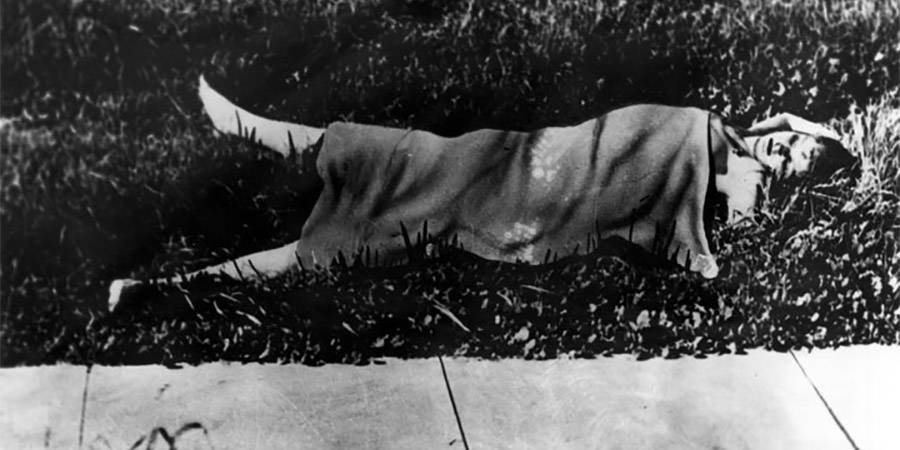
Los Angeles Public LibraryThe body of Elizabeth Short, aka the Black Dahlia, lies covered in a field in Los Angeles’ Leimert Park in 1947.
Not only did the perpetrators of these infamously unsolved murders slip through the hands of law enforcement, but they could still be alive today — they may be really old, but alive nonetheless. Lock your doors and read on to discover these chilling killers and why they remain at large:
Famous Unsolved Murders: The Phantom Killer Of Texarkana
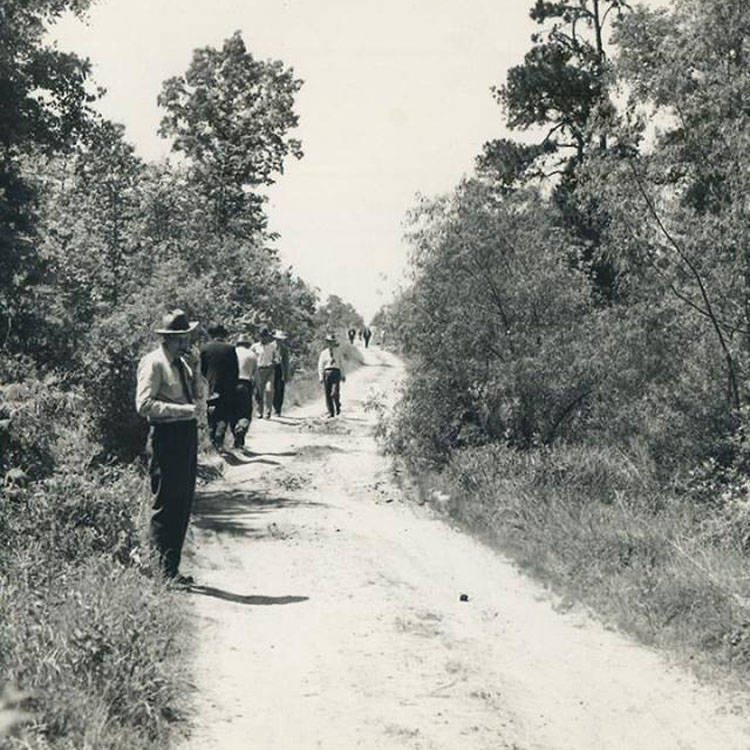
Wikimedia CommonsPolice search for clues in the “Phantom Slayer” case in Texarkana. 1946.
It’s an iconic image for horror fans: The man wearing a dirty burlap sack on his head with slits for eyes. And that’s exactly who the killer was in the Texarkana murders of 1946. This “Phantom Slayer,” as he is often called, killed five people and wounded three others. For ten weeks he terrorized the sleepy Arkansas town bordering Texas.
Targeting mostly young lovers in cars at night, the hooded murderer would kill the males, then sexually assault and kill the females. He left the couples in or near their cars for the police to find. The terrified residents of Texarkana went on lockdown, barely leaving their homes.
As with most unsolved murders, there were a few false confessions and unsubstantiated claims. Nevertheless, those closely involved with the case have a suspect they deem most likely: Youell Swinney, who was a local repeat offender with mostly burglaries and assaults on record.
Yet, there was not enough evidence to pin the case on him. The “Phantom Slayer” lives to slay another day.
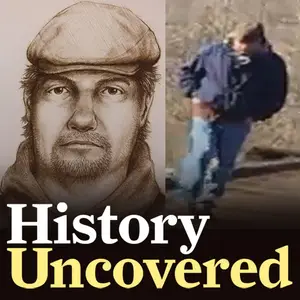
The Black Dahlia Murderer
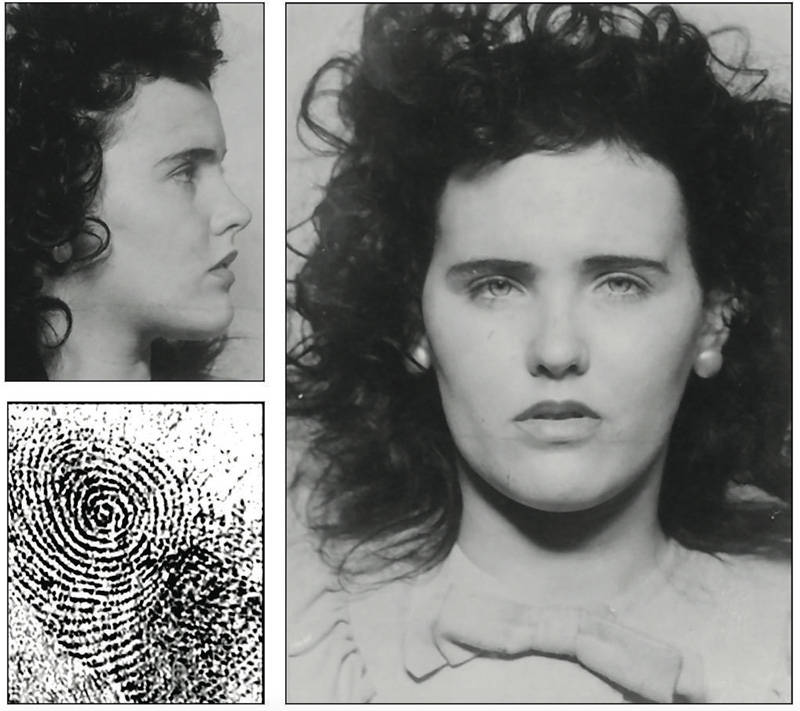
FBIElizabeth Short, aka the Black Dahlia.
Elizabeth Short might not be a particularly memorable name, but “Black Dahlia” certainly has a mystifying ring to it.
And the news of the raven-haired girl of 22 found slashed, bisected, and bloodless rocked Los Angeles in 1947.
The police looked for anyone with a motive. They thought that the killer might have had experience as a butcher, given the precise cuts and completely clean bisection of the body — in addition to a “Glasgow smile” (cuts running upwards from the corners of her mouth).
Before this grisly death, Short had a saucy reputation for unsavory sexual activity. By today’s standards, the press coverage reeked of victim-blaming; insinuating that her death “was unfortunate, but perhaps also to be expected,” in the words of the Line-Up. Yet, the police couldn’t find any proof that Short was a sex worker; just a young woman with a healthy dating life.
Nevertheless, the salacious Black Dahlia story was in heavy newspaper rotation, and 60 people confessed to the crime. Of these, less than half were considered viable suspects in the Black Dahlia murder. The police couldn’t gather substantial evidence on any of them.
Therefore one of the most gruesome cold cases in Los Angeles history remains unsolved. Today, all of the FBI files are available online, for those who wish to indulge their inner detective.
The Zodiac Killer
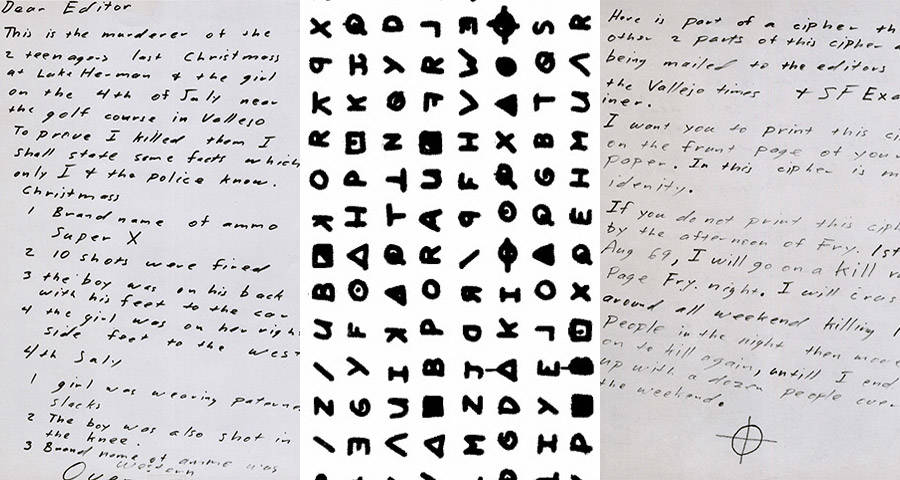
Wikimedia CommonsExcerpts of some of the letters and cryptograms left by the Zodiac killer.
One of the most elusive serial murderers to date, the self-proclaimed Zodiac Killer took at least five victims and got away clean. His killing fields stretched across the San Francisco Bay Area in the late 1960s and perhaps the early 1970s, where he taunted several newspapers with letters. He’d offer details about the murders, warn of upcoming killings, and pen cryptic, coded messages.
In these messages, the Zodiac claimed responsibility for many more unsolved murders than the five kills that have been confirmed by authorities. In fact, the anonymous letters stopped abruptly in 1974, with a scorecard reading: “Me = 37, SFPD = 0.”
In the 48 years since the first murder, the police have investigated (and subsequently cleared) more than 2,500 suspects. Perhaps the most recent plausible theory was that a man named Louie Myers was the killer.
On his deathbed, Myers confessed to his best friend that he was the Zodiac. There are four solid connections between Myers and the unsolved murders, but no smoking gun.
The Babysitter
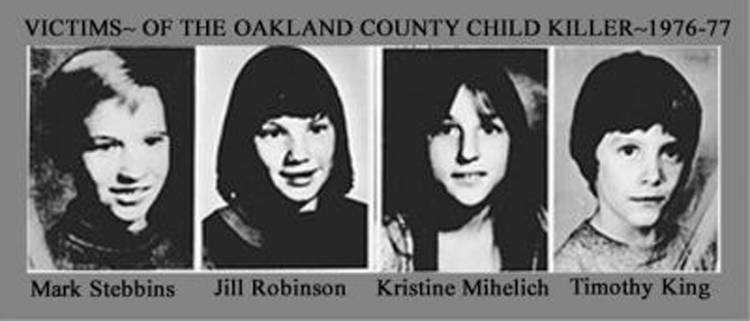
ImgurVictims of the 1970s killer sometimes called “The Babysitter.”
Also called the “Oakland County Child Killer,” this predator murdered four children between 1976 and 1977 in southeast Michigan. The Babysitter held his victims hostage for anywhere between a few days and a few weeks. He sexually assaulted them, killed them, and left their bodies in various positions in the snow.
The last confirmed case involved a boy named Timothy King. He disappeared on March 16, 1977, last seen with his skateboard entering a convenience store.
King’s mother wrote a desperate plea to the kidnapper in a Detroit newspaper for her son’s return. She spoke of wanting to give Timothy his favorite meal, fried chicken.
A few days later, two teens found Timothy’s body in the snow. His autopsy revealed that he was the victim of sexual assault, and his last meal was fried chicken.
There have been hundreds of possible suspects, though none have ever been brought up on charges, leaving the identity of the Babysitter a mystery.
The Original Night Stalker
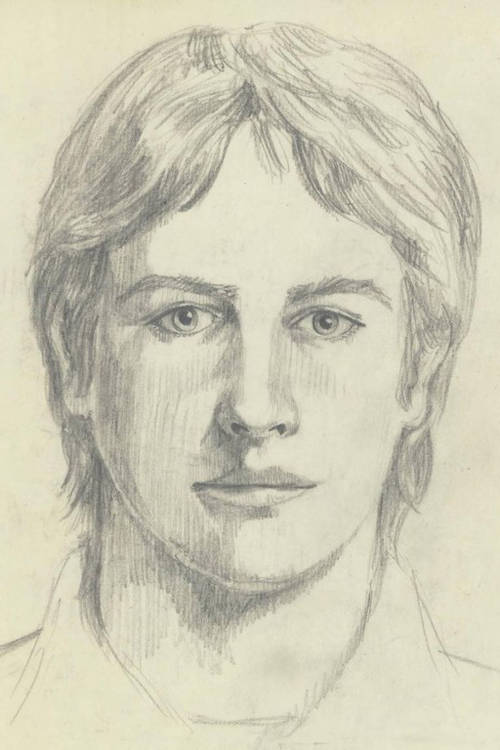
Wikimedia CommonsA composite sketch of the original Night Stalker.
Not to be confused with Richard Ramirez, the original Night Stalker was a serial rapist and murderer in California between 1976 and 1986. Because he was thought to be a young, college-age white male at the time of the killings, the original Night Stalker could be as young as his mid-50s today.
A particularly vicious killer, an escaped would-be victim reported that he once chanted “I’ll kill ’em, I’ll kill ’em, I’ll kill ’em,” which he said as if he was “a guy pumping himself up for an athletic endeavor,” one investigator said.
In addition to killing, the original Night Stalker liked to rape women as their boyfriends were tied up with shoelaces in adjacent rooms.
Because the killer never met justice for vicious crimes like these, there are still online communities dedicated to searching for him, with true crime writer Michelle McNamara, the late wife of comedian Patton Oswalt, among them.
The last time anyone heard from the Night Stalker was in 1991 when he called one of his victims on the phone. The call revealed a woman and children’s voices in the background, suggesting that the original Night Stalker may have gone on to start a family.
The I-70 Killer
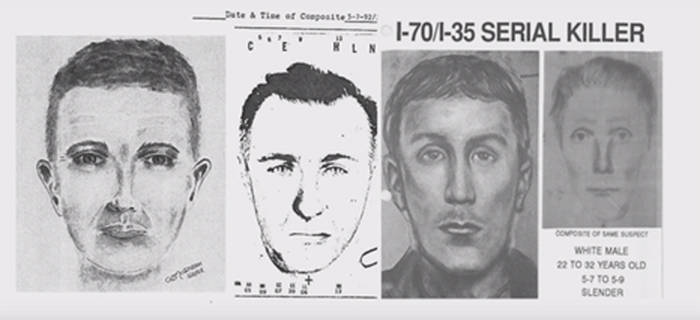
Wikimedia CommonsThe many possible faces of the I-70 Killer, according to several witnesses.
Beginning in April of 1992, the I-70 killer specifically targeted women working alone in small businesses near the I-70 highway throughout the Midwest. He murdered six (five women and one long-haired man in a ceramics shop, which was probably a mistake).
As far as serial killers go, the I-70 Killer was pretty sloppy, given that he shot his victims in broad daylight and simply ran back to the highway afterward. There were even two survivors because the killer’s gun jammed a couple of times, causing him to run off.
Even with a slew of eyewitnesses seeing his face and helping authorities create facial sketches, the I-70 Killer remains at large.
Coincidentally, one suspect that the police took into custody based on one of these sketches turned out to be a different serial killer altogether. As it turned out, this other killer in question, Herb Baumeister, liked murdering homosexual men instead.
Authorities found the skeletal remains of 11 men buried on Baumeister’s property. However, the police dismissed the possibility of Baumeister being the I-70 Killer (largely because there were no female skeletons found on his property and the I-70 Killer was known to have killed women), which means that he remains at large.
After this look at unsolved murders, read up on Hungary’s vampire serial killer. Then, read about why Portugal keeps the head of serial killer Diogo Alves preserved.





